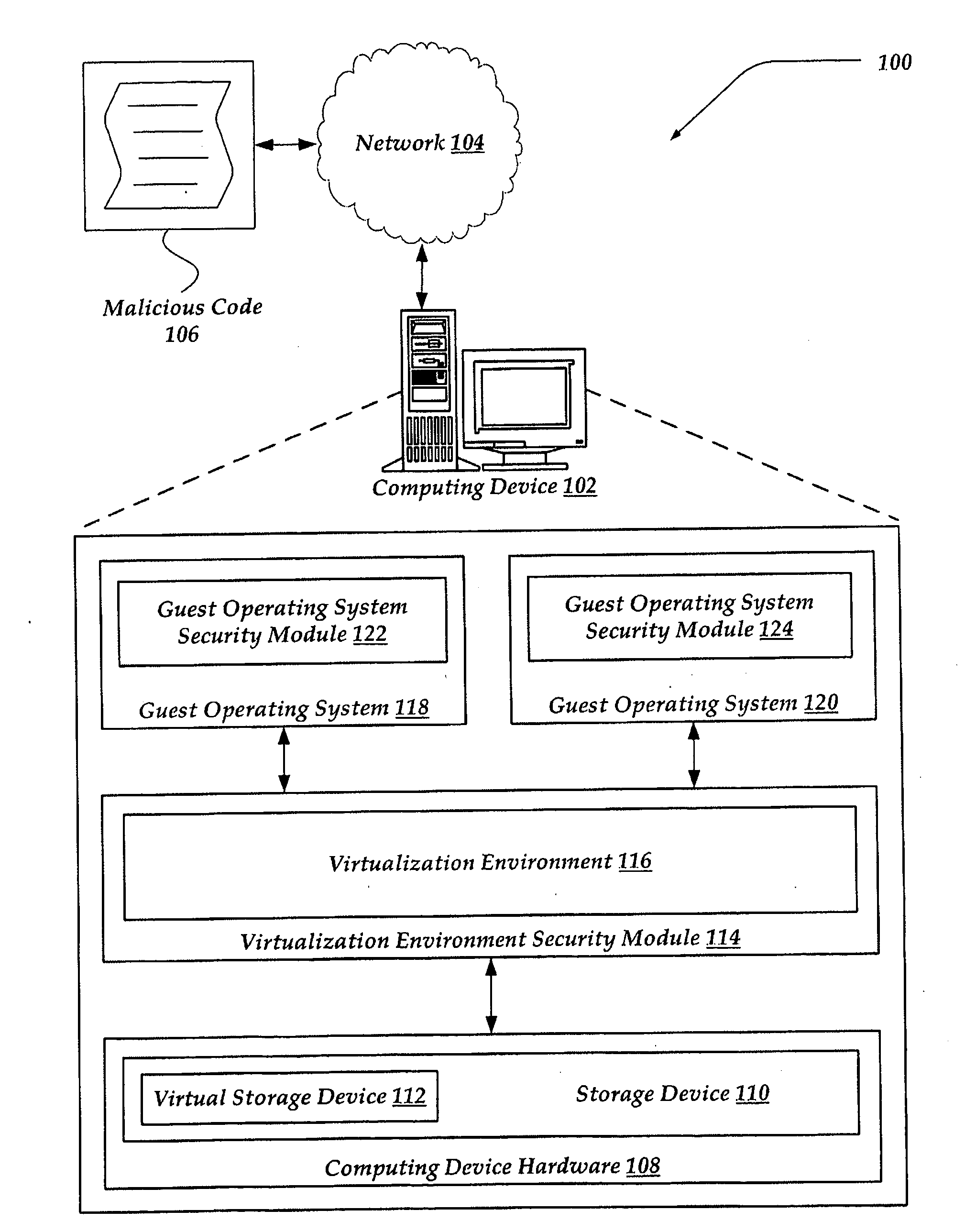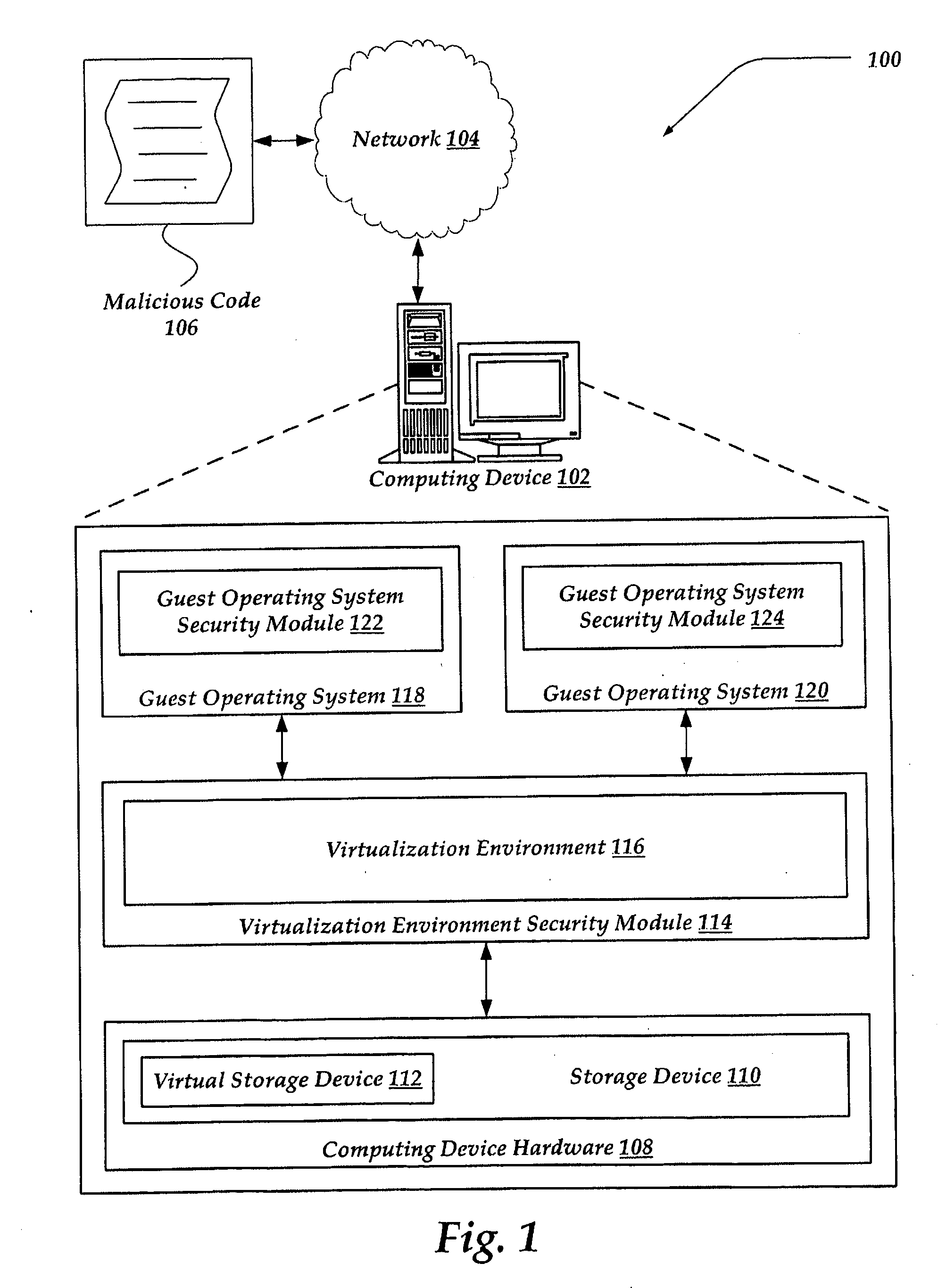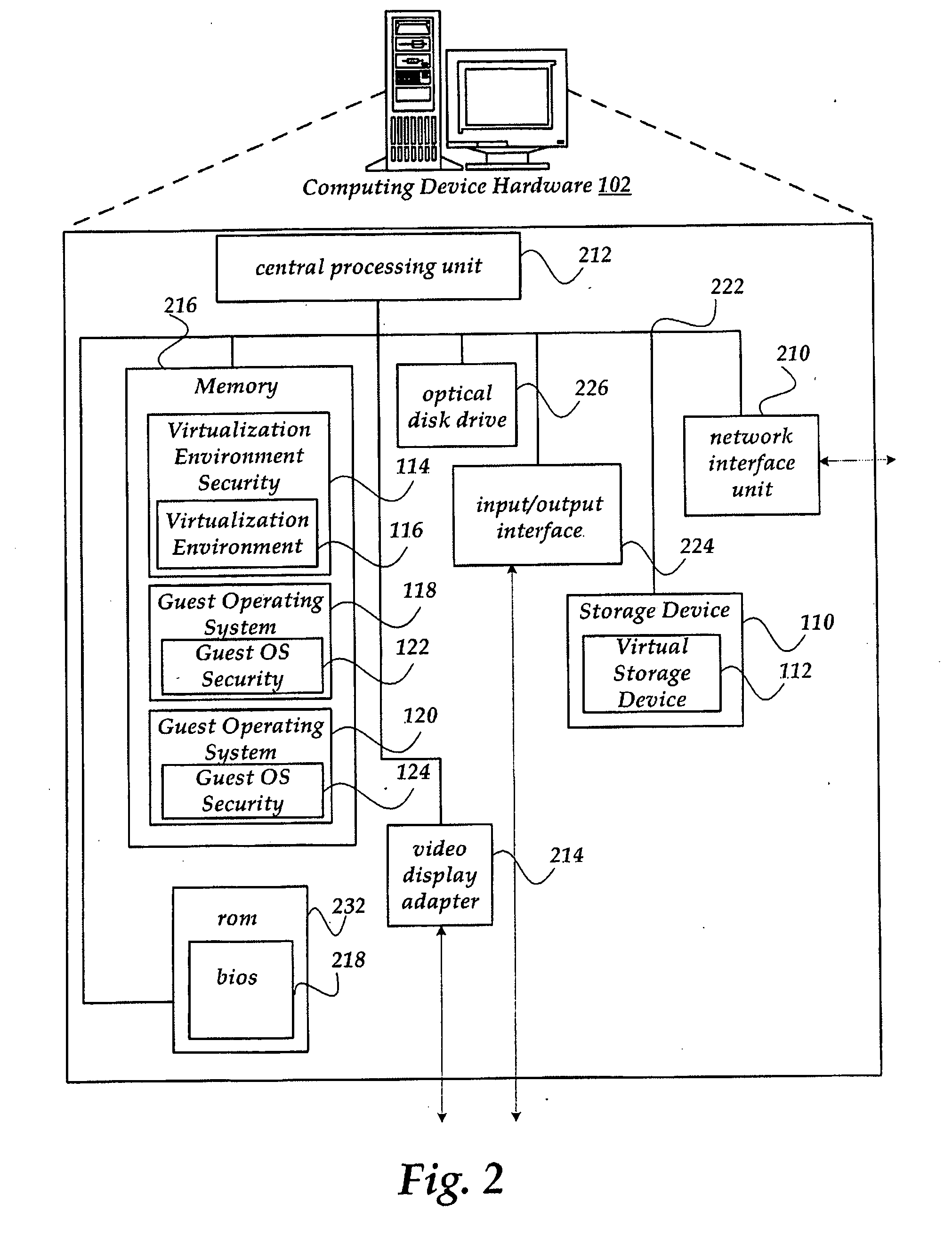[0014]For instance, a user mode anti-
virus software program may perform a
security analysis, typically without executing kernel mode functions, utilizing virtually complete information and control of kernel mode events. This technique avoids the unique challenges of writing
kernel level code such as kernel mode
memory management, thereby expanding the number of potential developers capable of developing software applications that benefit from the knowledge of and / or control of kernel mode events. Also, this technique enables development of richer applications by enabling developers to use the vast array of
third party libraries and technologies available for user mode code. The following are examples of the typical software applications that may use the techniques described within this application: anti-spyware, anti-
virus, on-the-fly
encryption of data, firewall, and any other process, network, file, or registry related software functions.
[0015]According to another aspect of the invention, the SMT
client manager may distribute a single event to more than one SMT
client, each
client having the ability to modify and / or allow / block / redirect the event. For example, one SMT client may intercept storage device access events for the purpose of securing the virtualization environment. A second SMT client may also intercept storage device access events for the purpose of collecting and aggregating
system data. The SMT client manager facilitates securely passing a single event to multiple SMT clients.
[0016]According to another aspect of the invention, the SMT client may install a persistent
security system that protects the virtualization environment after a restart or
reboot. Persistent security benefits the overall security of the
system because user mode applications, such as an SMT client, generally start later in the boot process than the kernel mode SMT provider manager and SMT providers. Without persistent security, waiting for the user mode SMT client to initialize the
security system may leave a potential window of
vulnerability to
malware. In one embodiment, installing a persistent
security system includes storing a
security policy on a
shared database. Then, upon restarting the virtualization environment and the initialization of the SMT provider manager and / or SMT provider, the SMT provider manager and / or SMT provider may read these policies and implement the security features on behalf of the SMT client.
[0021]According to another aspect of the invention, A virtualized storage device image is protected from unauthorized access, updates, or transfers to another medium. One example virtualized storage device image is a virtualized hard drive image containing a guest OS and associated data. Traditional security systems, including traditional anti-
virus programs, may be unaware that they are executing on a
virtual machine. On a
virtual machine, the “hard drive” may appear to the guest OS and any other applications as a real, physical hard drive, but is in fact a virtual hard drive provided by the virtualization environment. This additional layer of virtualization provides a potential
vulnerability, as malware may attempt to modify data in a virtual hard drive while outside the control of the guest OS. For instance, malware may attempt to monitor guest OS hard drive traffic while data is transferred from the virtual hard drive driver to the virtualization environment, as data is transferred from the virtualization environment to the real hard driver device driver, and / or as data is transferred from the real hard drive device driver to the physical hard drive, among others. In one embodiment, SMT providers are hooked into these events. In this way, the SMT provider displaces and prevents any other attempts to hook into the system.
[0023]In one embodiment, data stored to the virtual hard drive may be automatically encrypted, independent of any
encryption operation performed by the guest OS or any application running thereon. Automatic
encryption of data stored in the virtual hard drive further enhances security of the virtualization system. Similarly, an SMT provider and SMT client may redirect an event that reads encrypted data from the virtual hard drive to a decryption module, thereby enabling seamless encryption and decryption for the guest OS.
[0024]According to another aspect of the invention, security of the virtualization system is enhanced by facilitating communication between an SMT client in the virtualization environment and a security component executing on one or more guest OSs. In one embodiment, a guest OS may also be executing a system of SMT clients, SMT client managers, SMT provider managers, and SMT providers, to protect the guest OS from malware. In this case, there may be events intercepted on the guest OS that are unexpected or otherwise deemed to be malicious. In addition to the option of blocking these malicious events, the guest OS SMT client may communicate the existence and nature of the event to a virtualization environment SMT client. The virtualization environment SMT client, through a more complete view of the computing system, may seek to understand the cause of the event, inform SMT clients executing on other guest OSs of a potential
vulnerability, and / or terminate the guest OS.
 Login to View More
Login to View More  Login to View More
Login to View More 


